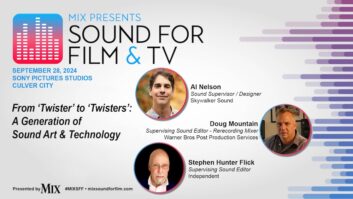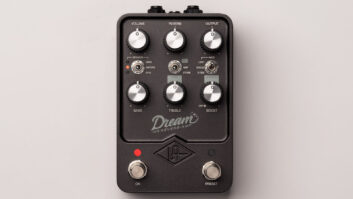Alex Chilton and Ardent Studios itself are co-stars in the documentary, Big Star: Nothing Can Hurt Me, now out on home video. Beyond the realm of audio gear, the editors at Pro Sound News are constantly exploring the latest books, shows and exhibits highlighting the music world, and the innovators behind some of the industry’s greatest moments. Below is another film we recently examined.

Some artists are forever associated with certain studios. You can’t talk about the Beatles without bringing up Abbey Road. Any look at the Beach Boys’ career will bring up United Western Recorders. Prince? Paisley Park. Run-DMC? Chung King. And it’s the same thing when it comes to Big Star, the legendary “lost” pop group of the 1970s whose story has always been tightly intertwined with that of Memphis, TN’s Ardent Studios.
In fact, the synergy between facility and band was so strong that the recent documentary, Big Star: Nothing Can Hurt Me (Magnolia; 111 minutes), now out on home video, starts by exploring how the studio was founded instead of the band that paved the way for many of the 1980s indie pop cognoscenti who appear in the film, like Mike Mills (R.E.M.), Mitch Easter, Robyn Hitchcock, Matthew Sweet, Chris Stamey and others. While the band was largely unknown while it was active, ensuing decades have seen its three albums grow in stature to become hailed as lost masterpieces, and Ardent was undeniably the catalyst that brought them to life.
Right off the bat, the camera leisurely slides down the studio’s hallways, stopping to watch a vinyl lathe at work inside L. Nix Mastering while recounting how 1960s Memphis was a recording hotbed, filled with garage bands that the studio’s founder, John Fry, recorded in his home as a teen. When the acts began to have regional hits, he knew it was time to start Ardent: “I was 21 years old when we started that commercial studio and I probably looked to people like I was about 16. There was no reason for those people to think I knew what I was doing.”
Even so, the studio took off almost instantly thanks to Memphis’ famed R&B label, Stax. The record company had recently started upgrading its studio, and as it happened, both Stax and Ardent purchased the same console and multitrack recorders—a coincidence that led to Ardent getting overflow work. Instantly, Fry and his team went from recording high school bands to sessions with Booker T and the MGs and Isaac Hayes. That, in turn, led to the creation of Ardent Records, a rock imprint for Stax, that kicked off with a release by Big Star—a band founded by one of the studio’s assistants, Chris Bell, and featuring drummer Jody Stephens, who works at Ardent to this day as its general manager.
Bell co-wrote and sang most of the debut, #1 Record, with bandmate Alex Chilton, who, in his early twenties, was already a seasoned music veteran, having fronted The Boxtops (“The Letter”). As bassist Andy Hummel recalls, Bell “poured his heart and his soul into this thing.” The press, however, treated the four-piece as Chilton’s new band, and heartbroken at being ignored, Bell quit the group he had created, sinking into a morass of emotional problems and substance abuse while trying to start a solo career, before dying in a car crash in 1978 at the age of 27.
If Ardent was a greenhouse that allowed Big Star to grow and emerge fully blossomed on its first album, it inadvertently proved to be the band’s undoing as well. Because the act was essentially a studio project as opposed to a band that had cut its teeth on the road, Bell had no idea that the public wouldn’t see him as Chilton’s equal. As the late producer Jim Dickinson notes, “Chris is in every way a tragic figure, but you’re dealing with a reality and a fantasy. Big Star never had to [perform] night after night, trying to pay for the damn bus. So the fantasy, which all starts when you’re strumming your tennis racquet… was able to grow until voila.” Lurching onward in fits and starts after Bell’s departure, the band found little more success with the followup, Radio City, and finally fizzled out before its final LP, Third/Sister Lovers, was released.
Big Star: Nothing Can Hurt Me captures all the simple highs and complicated lows of the band’s journey, talking with so many of the main players that the absence of Bell and Chilton, who died in 2010, isn’t really felt; if anything, one suspects it allowed everyone involved to speak more freely. Extras on the DVD include a 15-minute, in-depth studio and gear tour of Ardent, wholly appropriate given the facility’s importance in the band’s story. Lushly shot, concisely edited and soundtracked with plenty of the band’s chiming guitars and wistful harmonies, the film is squarely aimed at those who are already Big Star evangelists—which is to say every Big Star fan—but still holds water as a factual recounting of the group’s tumultuous tale.







